
Michail Pirgelis
Depression is Art, 2016
Aluminium, fibreglass, accoustic fabric
315 x 74 x 59 cm
Boeing 747: There are three luggage compartments between the two aisles, a hollow body from both sides. Plastic panels and flaps were removed, a part of the body was cut off to straighten existing curves and to abstract the form. Subsequently, the openings were covered with fabric to create an association with speakers. Some technical remnants such as cables and light fixtures were deliberately not removed to reinforce this association.
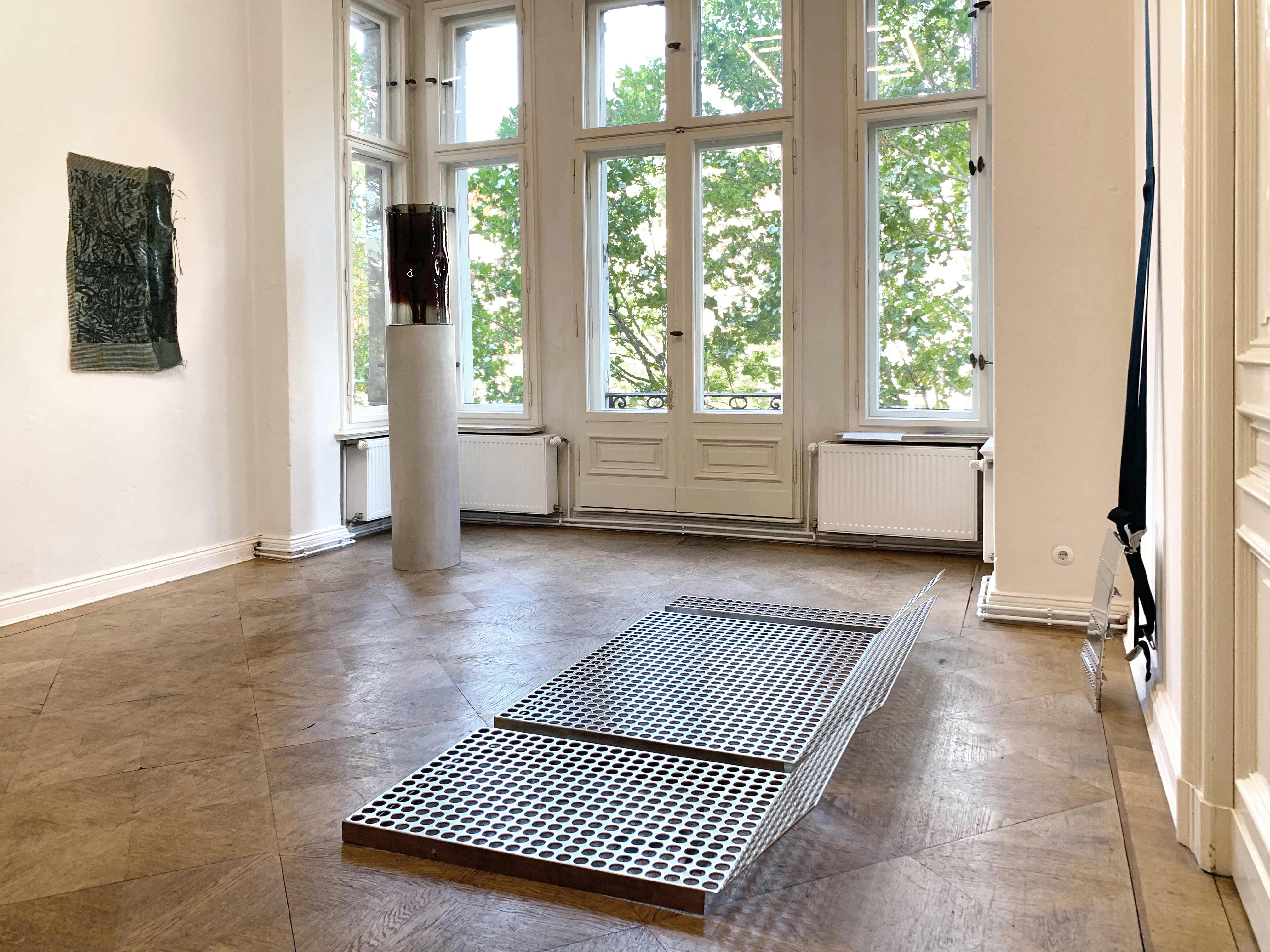
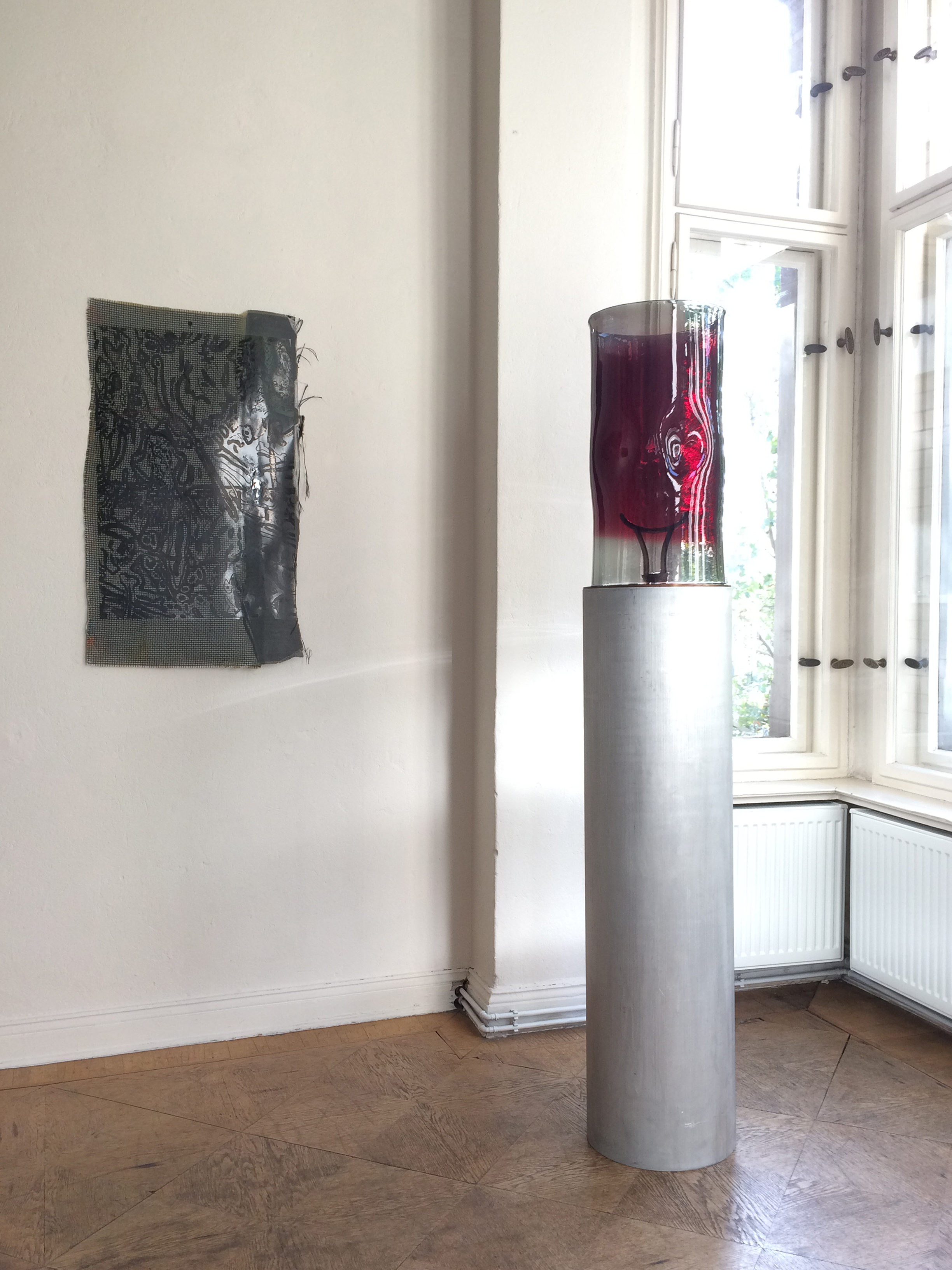
Paul Hance
Wirikuta Dream Arch, 2019
Hand-blown glass, Ethiopian head rest (wood), brass, aluminum
ø 35 cm H. 194 cm

Wirikuta is a place high in the mountains of central Mexico between the mountains of Sierra Madre Oriental and Zacatecas, near Real de Catorce, which is sacred to the Wixárika (Huichol) Indians. The Huichols live very secluded and are thus one of the last untouched by civilization Native American tribes of Mexico. Wirikuta is the focus of an annual pilgrimage where parishioners, led by Maraka’ames (Chamanes), travel about 400 kilometers from Jalisco to San Luis Potosí. The area where the pilgrimage takes place is protected as a UNESCO nature reserve, but there is a risk of exploitation and environmental damage by the foreign mining company First Majestic Silver.

Estrid Lutz
From Rubbish To Spirits, 2018
Kevlar / carbon fiber, epoxy resin, ink infused resin / fiber, photolumiscent pigments
103 x 58 cm
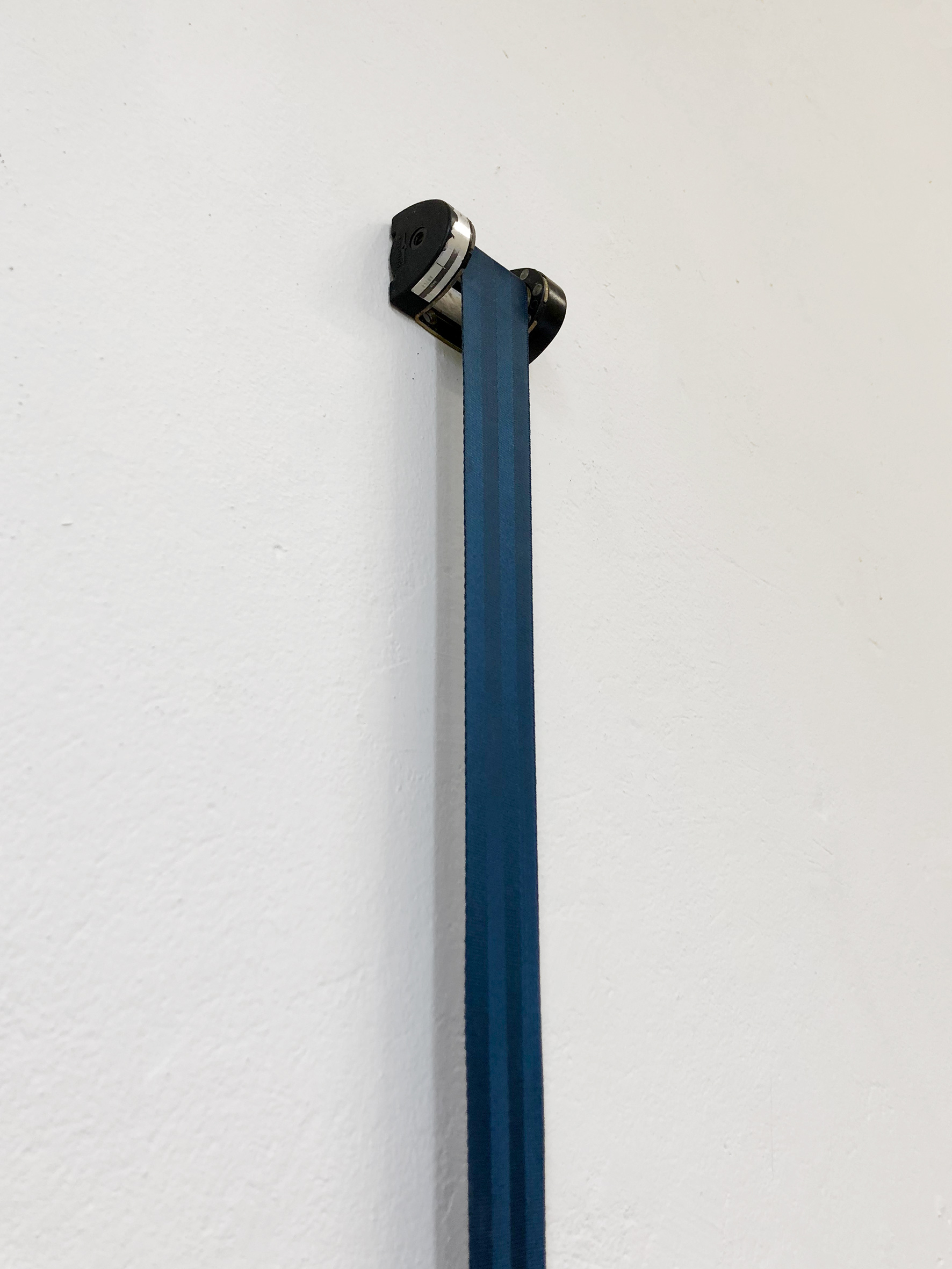
Michail Pirgelis finds the material for the majority of his works on airplane cemeteries in California and Arizona, where discarded passenger planes await their dismantling and the recycling of their valuable aluminium and titanium alloys. Pirgelis removes individual segments from the gigantic aeronautical bodies for further modification in his studio. Some of them he lefts in their original state.
The works succeed in revealing the suppressed fears which are often unconsciously associated with flying, even though for many of us it has become part of our everyday experience. Pirgelis repeatedly returns, in his sculptural works, to the dream of flying, one that perhaps will soon be a thing of the past. The “recycled” materials in his works tangibly address the anxieties linked to air travel in an era of diminishing resources, oil crises, terror attacks, global recession, and climate change.
Excerpt from Adopted, Michail Pirgelis, Sprüth Magers Berlin 2014
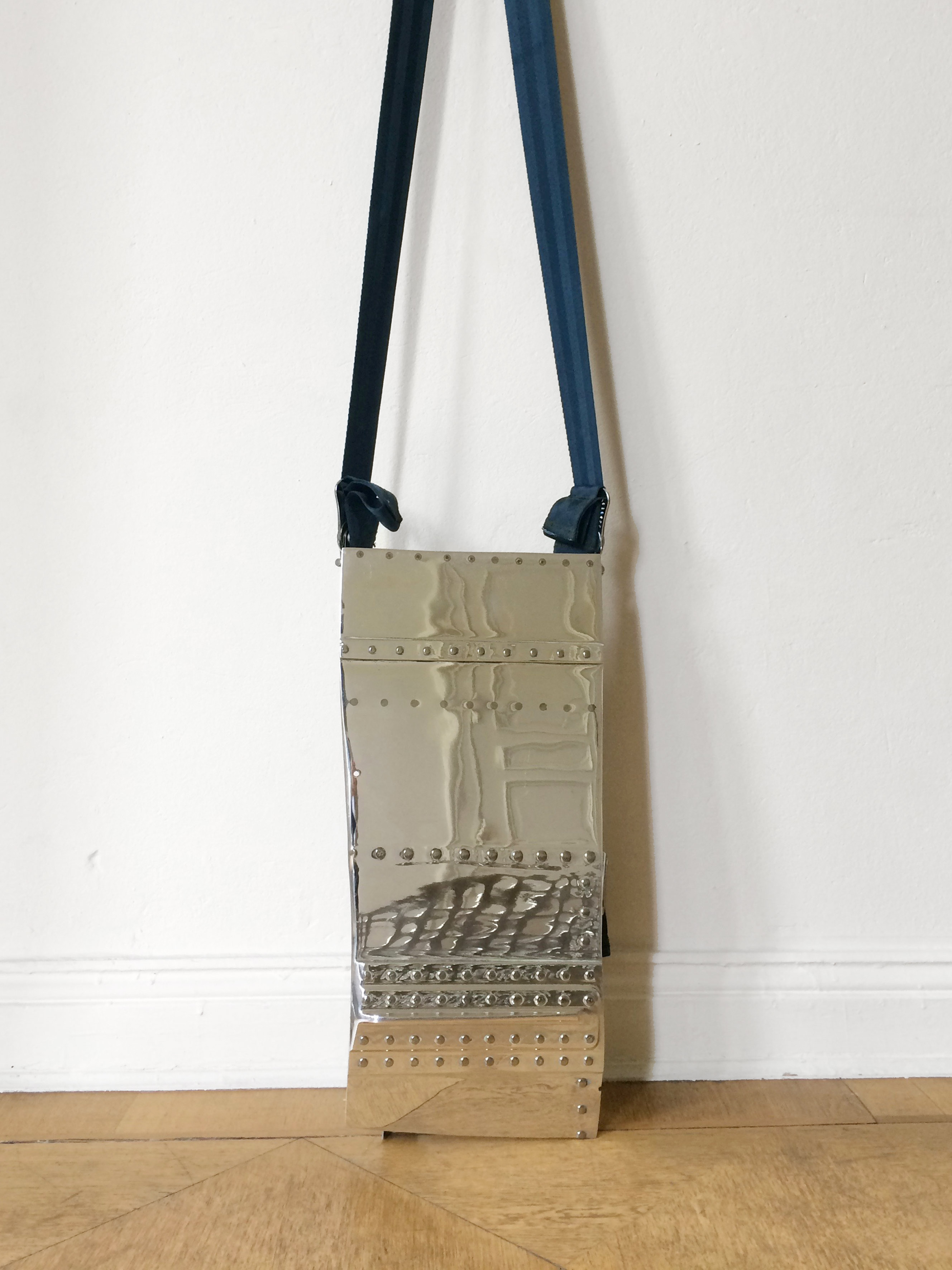
Michail Pirgelis
Continental, 2012
Aluminium, titanium, seat belt
212 x 28 x 10 cm
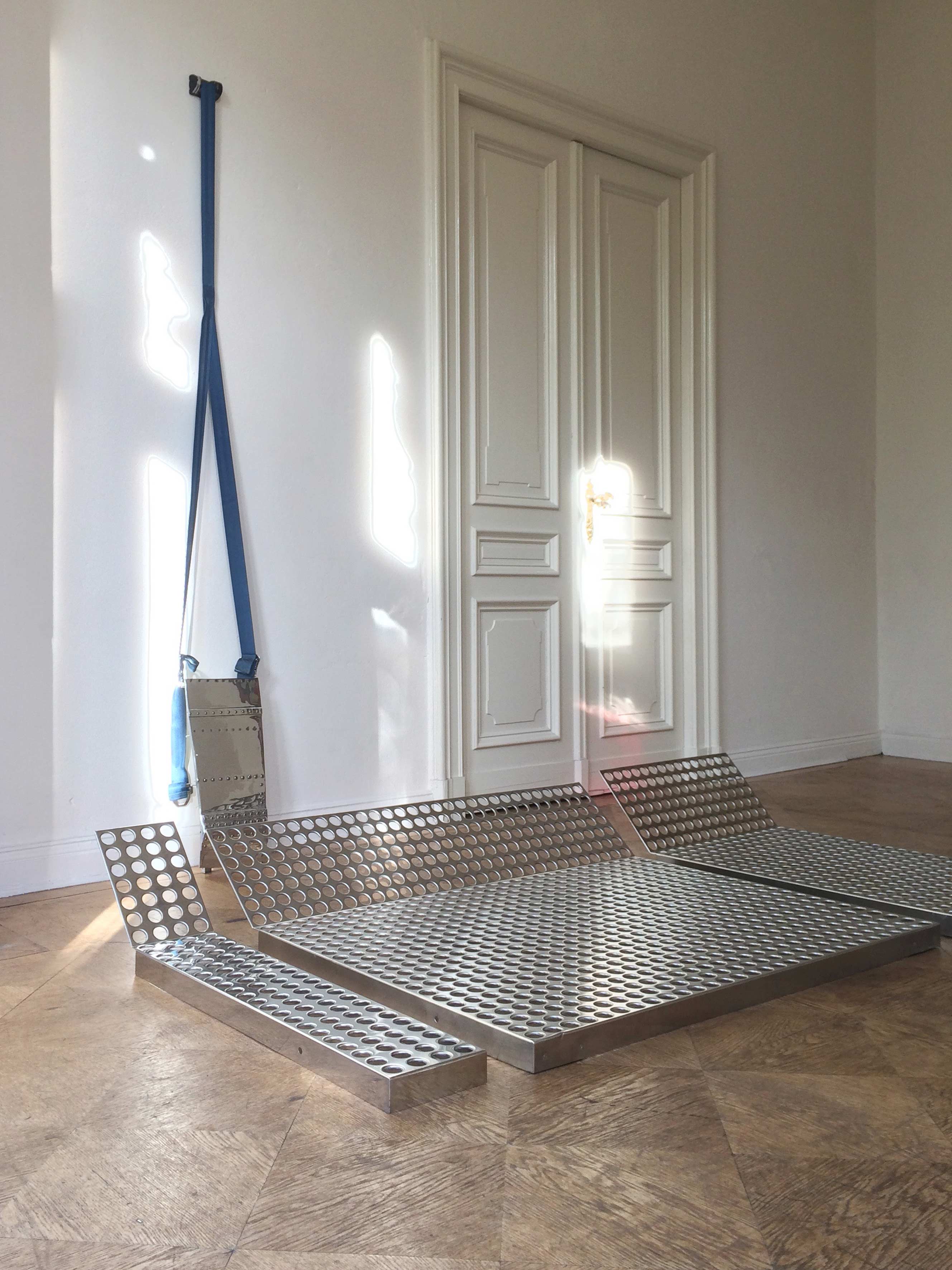
“And so they flew over our heads, Drenched in the lava,
And with them all our dreams dispersed, Across the universe.”
That’s the picture that came to my mind when I encountered Angela Mewes’ metallic LUFTMATRATZEN.
The artist imagines these perforated structures as they float in the ocean right after a volcanic eruption. Mewes, who works with canvas, text, photography and film, returns again and again to sculptural forms, using either found materials, or fabricating them in her studio in the German countryside. A daydreamer, a poet, and an artist revealing the secret life of everyday objects, with LUFTMATRATZEN she speaks about lost hopes as much as the preservation of lives and stories in the wet, deep sea.
Helena Papadopoulos, Athens

Angela Mewes
Luftmatratzen, 2019
Stainless steel
124 cm x 112 cm x 23 cm
61 cm x 110 cm x 26 cm
19 cm x 10 cm x 26 cm

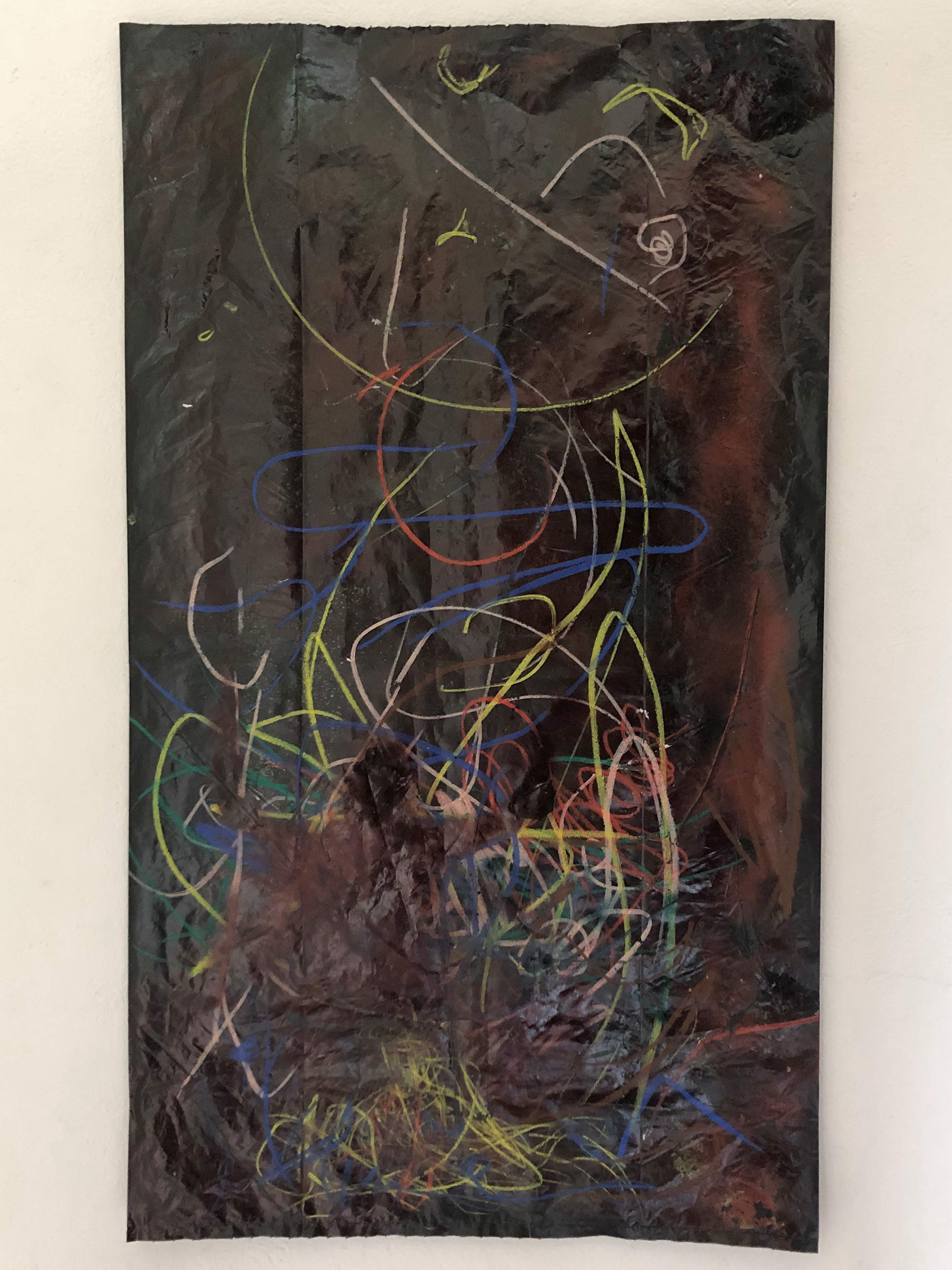
Salome Machaidze
Tokio Sunrise in Ferrari yellow with Miss Hiroshima – Alabama alphabet glow, 2019
Oil pastel, car paint on PE
100 x 57,5 cm


Paul Hance
Constant Dream Gardener, 2019
Hand-blown glass, silver mirroring, shelf aluminum
92 x 65 x 10 cm